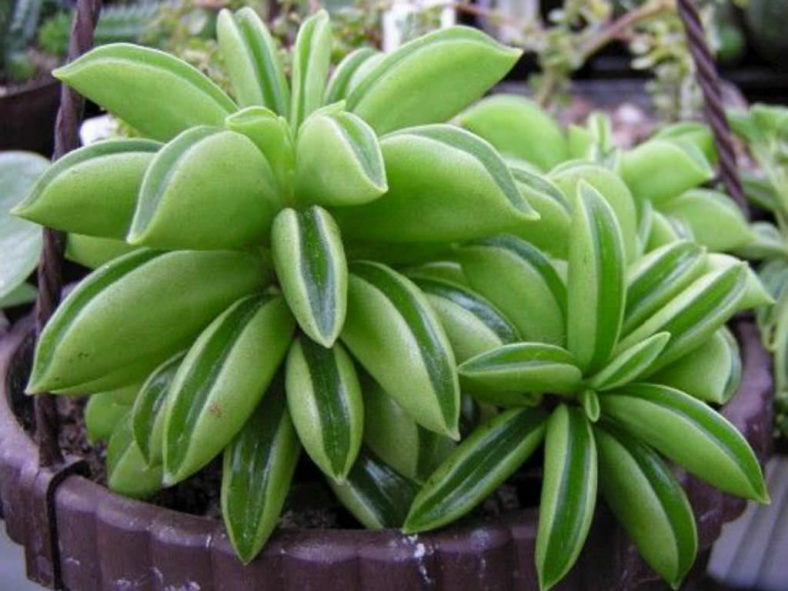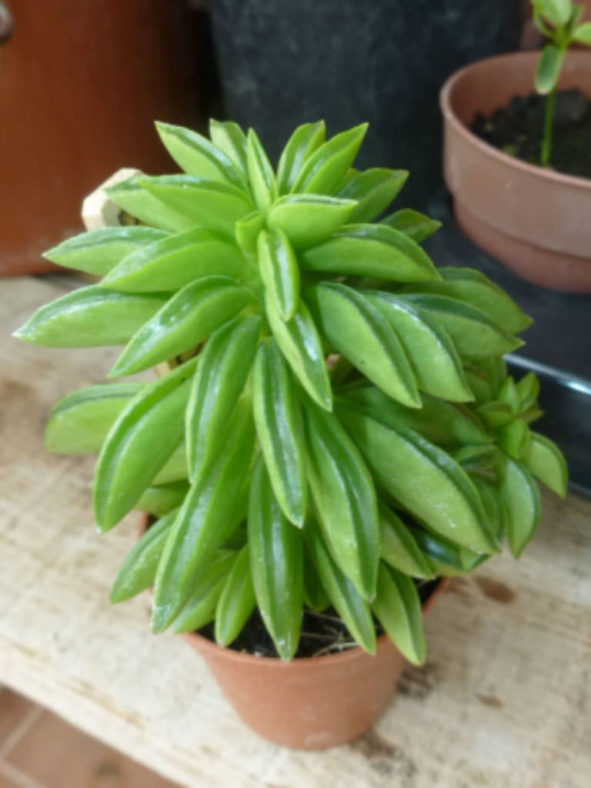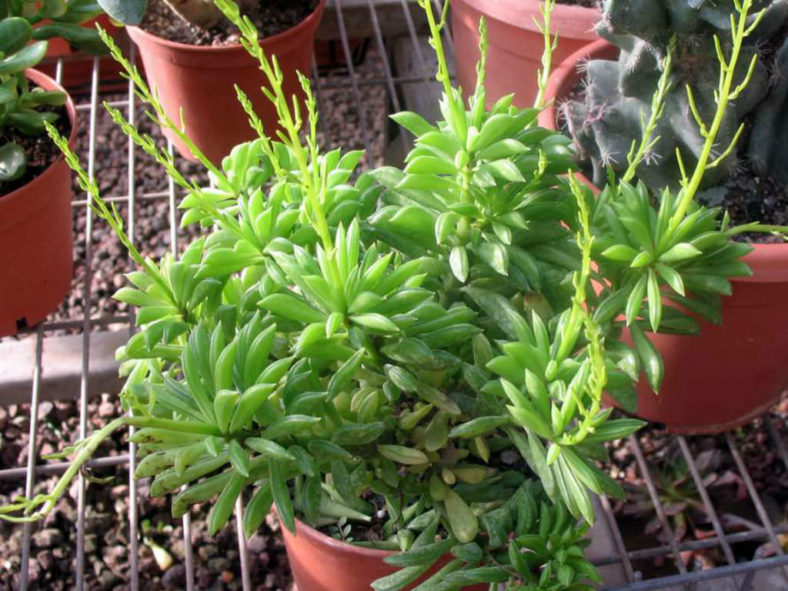Scientific Name
Peperomia dolabriformis Kunth
Common Name(s)
Prayer Pepper
Synonym(s)
Peperomia dolabriformis var. dolabriformis, Piper dolabriforme
Scientific Classification
Family: Piperaceae
Genus: Peperomia
Origin
Peperomia dolabriformis is native to the warm valleys of northern Peru, where it grows as an epiphyte or terrestrial on rotten wood and leaf litter.
Description
Peperomia dolabriformis is a shrubby succulent with thick, fleshy, light-green leaves folded in half upward and fused along the dark green margins, creating a narrow dark green window. It can grow up to 2 feet (60 cm) tall and can be either rosette-forming or erect, laxly branched with fleshy stems that become woody with age. The leaves can measure up to 3 inches (7.5 cm) long, 0.5 inches (1.2 cm) wide, and 0.6 inches (1.5 cm) thick.
The inconspicuous greenish-white flowers appear on green, slender panicles that grow up to 16 inches (40 cm) long in summer.

How to Grow and Care
Peperomias are not particularly hard plants to grow, and their small size and delicate leaves make them perfect for desktops and dish gardens. They will rarely overtake their neighbors or shade them out. In short, they are perfectly mannered and attractive little plants. The biggest problems are usually related to watering. They like steadily moist soil but can be very sensitive to overwatering. Overwatered Peperomias tend to wilt or have raised, scab-like protrusions on their leaves. Do not be alarmed if your plant loses a few bottom leaves, but a massive leaf drop is usually due to a temperature change or fertilizer problem. Lastly, Peperomias are susceptible to mealybugs, so keep an eye out for cottony white masses on leaves' stems or undersides. These plants thrive when slightly pot-bound, so do not overpot them.
Repot plants in spring, especially to refresh the existing soil, but place them back into the same size container after root-pruning or go up to only one pot size. The largest Peperomias remain relatively small and will never grow into large specimen plants. Most species can be relatively easily propagated from leaf cuttings.
Learn more at How to Grow and Care for Peperomia.
Varieties
Links
- Back to genus Peperomia
- Succupedia: Browse succulents by Scientific Name, Common Name, Genus, Family, USDA Hardiness Zone, Origin, or cacti by Genus
Photo Gallery
Click on a photo to see a larger version.


